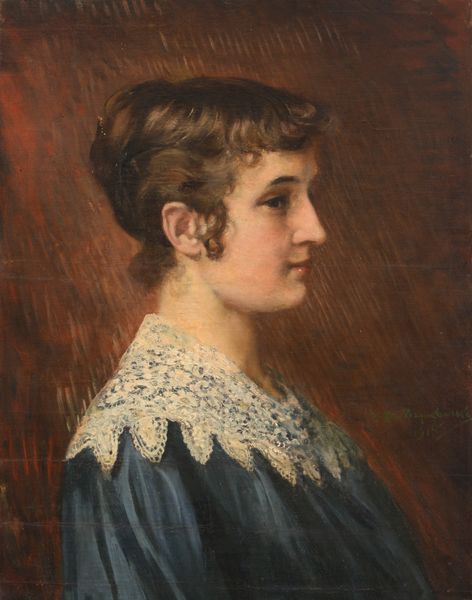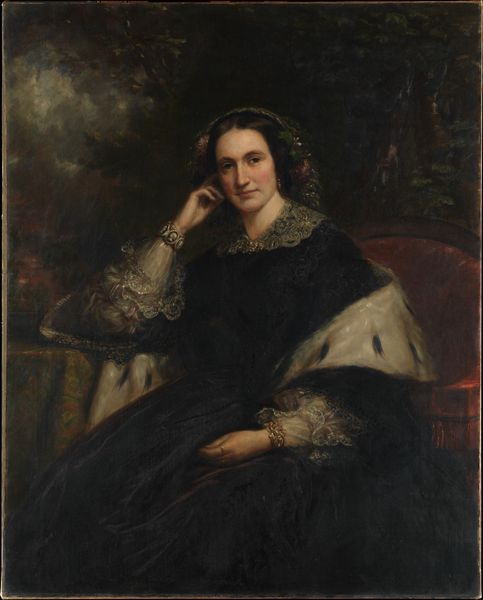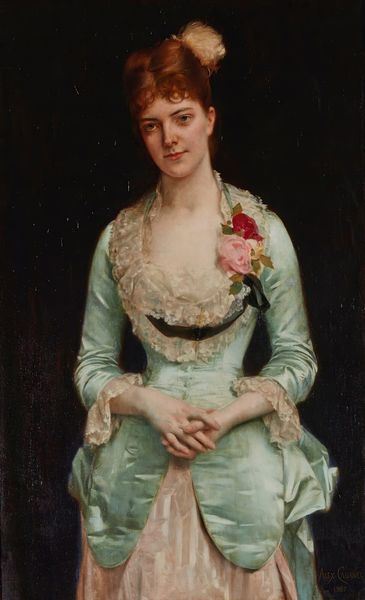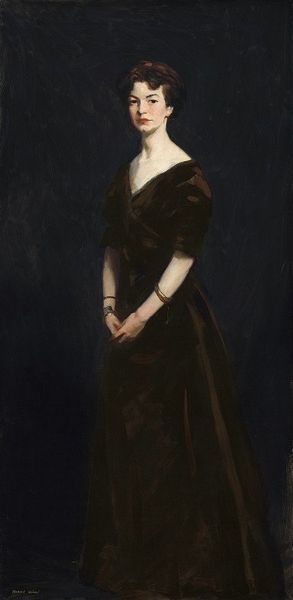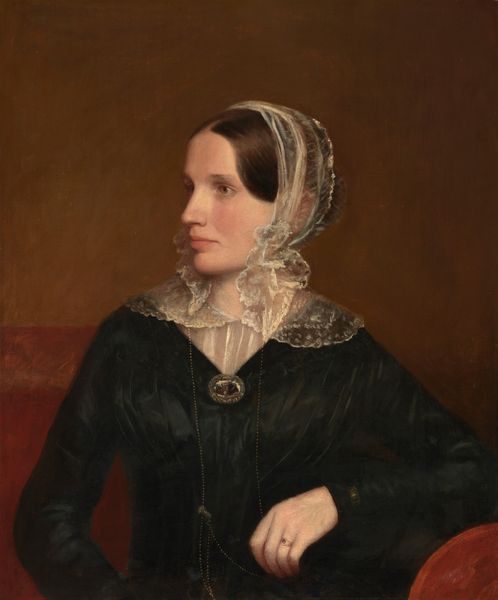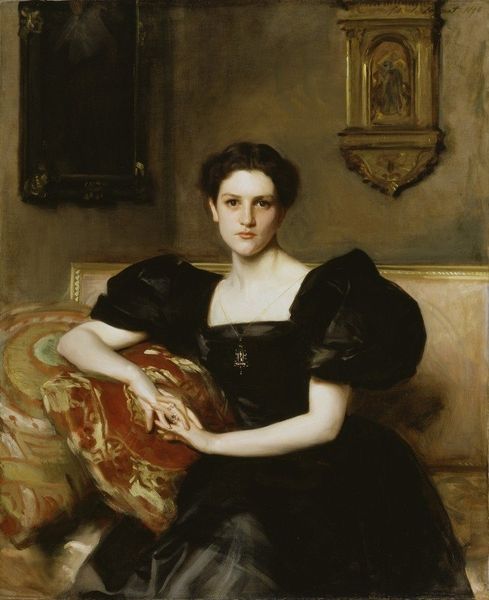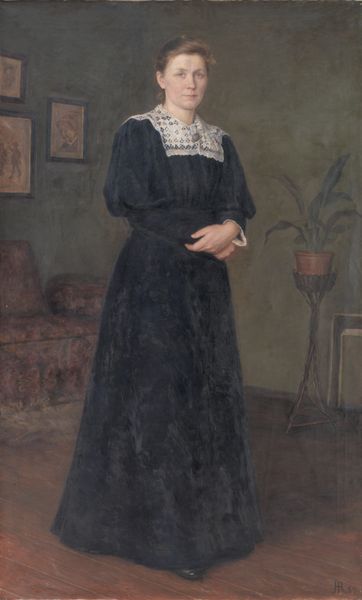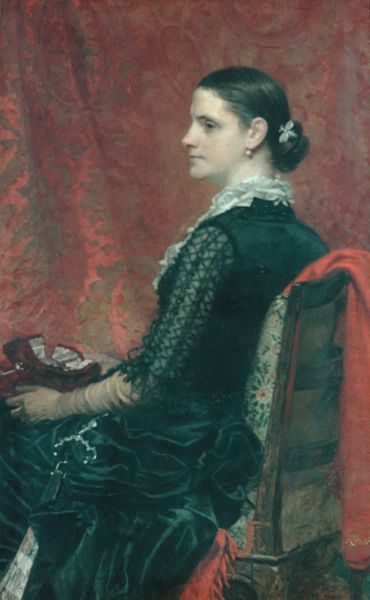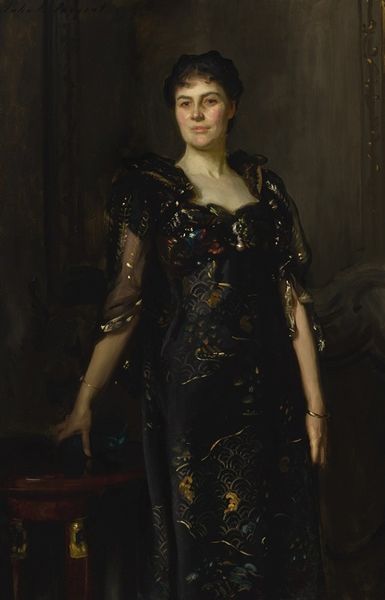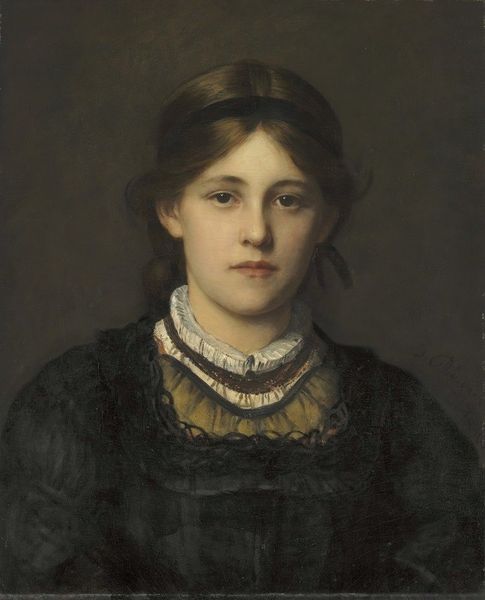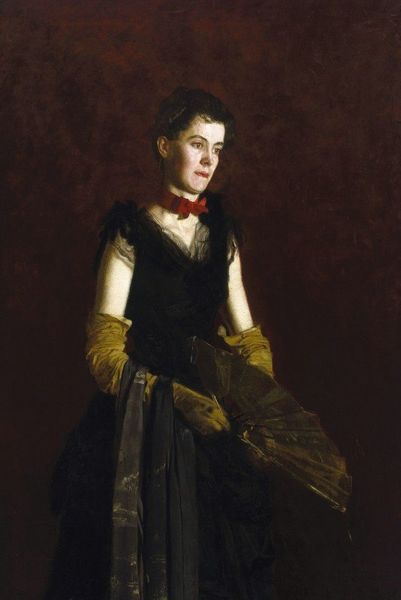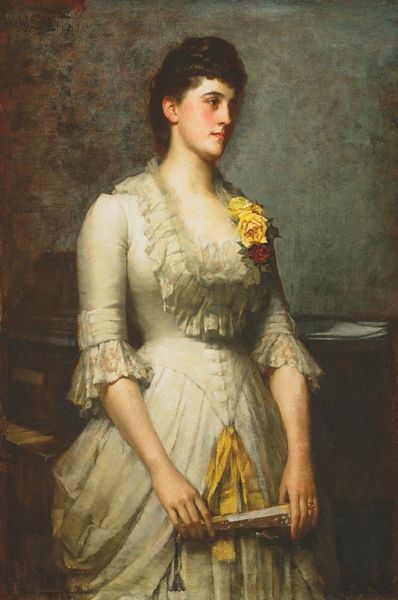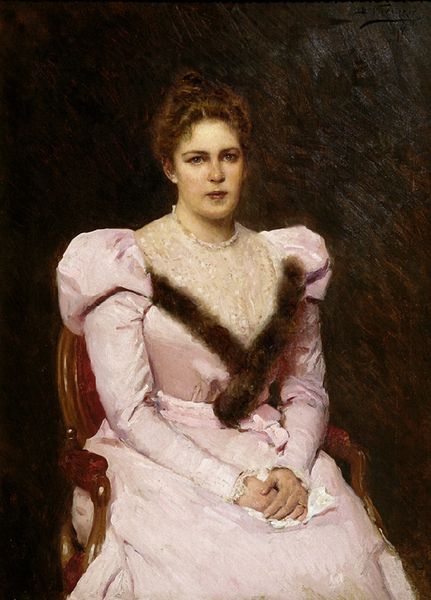
Dimensions: 119 cm (height) x 85.5 cm (width) (Netto), 149.9 cm (height) x 116.5 cm (width) x 12.1 cm (depth) (Brutto)
Curator: Standing before us is Elisabeth Jerichau Baumann's "Forfatterinden Emma Kraft," oil on canvas, created between 1834 and 1881. Editor: There's a stillness about this piece, almost melancholic. The soft light creates an intimate, personal mood, as though capturing a private moment. The textural contrast is striking—the smooth skin against the fur stole. Curator: Jerichau Baumann gained considerable recognition, particularly as a woman artist in a male-dominated art world. Emma Kraft was part of the intellectual circles in Copenhagen. This portrait, then, performs specific work within those circles. Editor: I agree that its power resides in these material qualities. Notice how the light isn't uniform but directional, accentuating the folds of her dress and the contours of her face, drawing your gaze directly to her thoughtful expression. Semiotically, even her clothing, or more accurately, the details of it, communicates much. Curator: Absolutely. The subtle detailing—the jewelry, the red ribbon in her hair, the opulent fur—speak volumes about Kraft's social position and her embrace of emerging intellectual currents. The painting acts as both a representation and a carefully constructed symbol within broader discussions around female authorship and intellect. It is romantic but also quite pragmatic in its intent. Editor: But Baumann wasn’t simply a chronicler of status. She deliberately crafted an image that is rife with pictorial harmony, and even some subversion; note that the stark dark background focuses the figure of Kraft. There’s also an interesting ambiguity—does the expression convey strength or vulnerability? I believe the formal design allows that dichotomy to stand. Curator: Yes, it’s precisely this tension between public image and the complexities of personal identity that makes this portrait so compelling. We can also consider what her position would be if this had been commissioned by male portrait painter of the time. The narrative around Kraft and, really, women's rights might not be fully as known. Editor: And for me, that's a successful composition - an artist fully in control, allowing nuances, not dictating them. It invites you to contemplate the individual, while leaving much space for speculation, the painting transcends pure representation. Curator: Very true. Looking at this portrait of Emma Kraft tells a wider, critical history of women in the arts and of how women made their mark through artistic portrayal, their way, in Romanticism and Academic Art.
Comments
statensmuseumforkunst almost 2 years ago
⋮
ENGELSK Elisabeth Jerichau-Baumann: The writer Emma Kraft, 1860s, oil on canvas, 119 x 86 cm, Statens Museum for Kunst, KMS3728. After arriving in Denmark in 1849, Jerichau-Baumann became one of the most sought after portrait painters. She portrayed several famous men and women of the era, among others the fairy tale writer H.C. Andersen (1805-75), the politician Orla Lehmann (1810-70) and the actress Johanne Luise Heiberg (1812-90). The portrait of the Danish writer Emma Kraft (1844-1925) is undated, but considering her date of birth and presumed age in the portrait, a qualified estimated dating of the painting would be around 1860-65. In all likelihood, it is a portrait of Emma Kraft in her youth, long before she made her debut as a writer in 1893. Kraft wrote books both for children and adult readers and worked as a translator. Especially her children’s books, such as Mellem Trolde [Among Trolls] illustrated by Louis Moe, are characterized as important contributions to Danish children’s literature. Within the portrait genre, the painting stands out through the convincing materiality in the rendering of the dress and fur as well as the delicate effects of Kraft’s luminous complexion against the golden, softly modulated background. The shimmering colour play in the dress is also captured strikingly, and the red colour running through the bandeau, earring, broche and lips are used to create a sense of liveliness and variation in the otherwise subdued colour scheme.
Join the conversation
Join millions of artists and users on Artera today and experience the ultimate creative platform.
